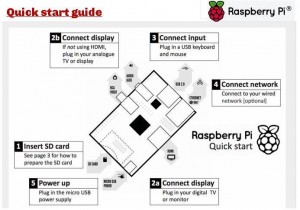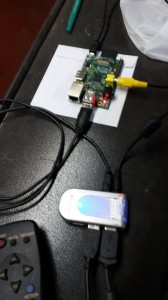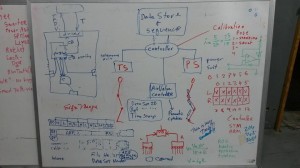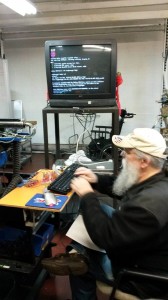The Raspberrypi “Raspberry Pie”  for the LIFESUIT is another exploration project to see what computer systems can be used to make the dream of the gift of walking a reality. The LIFESUIT is an exoskeleton that is controlled by computers to mimic human behavior and allow paralyzed people to walk. Future versions of the LIFESUIT could be used by wounded warriors to stay active duty or disabled American Veterans who want to return to work or run their own business. Lately the Pentagon has been talking about the TALOS Exoskeleton. Share this link on Facebook etc. http://theyshallwalk.org/?p=2222
for the LIFESUIT is another exploration project to see what computer systems can be used to make the dream of the gift of walking a reality. The LIFESUIT is an exoskeleton that is controlled by computers to mimic human behavior and allow paralyzed people to walk. Future versions of the LIFESUIT could be used by wounded warriors to stay active duty or disabled American Veterans who want to return to work or run their own business. Lately the Pentagon has been talking about the TALOS Exoskeleton. Share this link on Facebook etc. http://theyshallwalk.org/?p=2222

TALOS was the automation from mythology that was tossed into the garbage heap from the gods when it was deemed useless. Read more about the TALOS system here http://theyshallwalk.org/?p=2227
The Raspberry Pi uses Linux an open source operating system.
We are experimenting to see if the Raspberry Pi would be a good fit for our “Brain Pak” module of the LIFESUIT control system. For those of you who have not heard about the Brain Pak I will give you a brief overview here. The LIFESUIT has several “Pak” sub systems that are all interconnected. They talk to each other and simulate the way the body cells talk to each other. In a living body cells communicate with the nervous system and they all communicate with the brain. A lot of detail and controversy comes up with the question of the levels of communication the over all system in the human body, as well as other living systems. Theory vs application… I have not had a conversation with the human  brain stem or a nerve cell so the exact details are controversial. When a cat has a spinal cord injury the spinal cord itself has the “software” to control the walking gait in the legs. Many researchers believe, and have tried to prove that the human spinal cord has the same “software” to control human walking gait in paralyzed people. I will not go into the details of that here because of the controversy.
brain stem or a nerve cell so the exact details are controversial. When a cat has a spinal cord injury the spinal cord itself has the “software” to control the walking gait in the legs. Many researchers believe, and have tried to prove that the human spinal cord has the same “software” to control human walking gait in paralyzed people. I will not go into the details of that here because of the controversy.
In the living system we have cells in the foot that send signals to the brain and surrounding cells letting them know the foot is moving. Signals go to the Spinal Cord, the Brain Stem, and the Brain as well.
In the LIFESUIT we have designed a modular system that includes: Toe Pak, Foot Pak, Calf Pak, Knee Pak, Thigh Pak, Hip Pak, Lower Torso Pak, Balance Pak, Gait Pak, Obstacle Avoidance Pak, GPS Pak, WiFi Pak, Update Pak, Brain Pak, HIT (Human Interface Technology) Pak etc… In addition there will be some redundant systems as well. All of the Pak’s have ARM microcontrollers or PSoC controllers in them. They all operate independently and communicate with each other. They all have a prime directive function that is their sole purpose to exist. The chain of command is the way they all cooperate to accomplish a functional system.
 An example of the chain of command is with the “Balance Pak” and the “Gait Pak”. The Gait Pak has a job to help the system walk. The Balance Pak has the job of making sure the system stays upright and does not fall. The Balance Pak has to talk to at least three subsystems to be sure the LIFESUIT is actually balanced and not falling. When the Balance Pak recognizes that the LIFESUIT is in fact falling it has the high rank in the chain of command to interrupt the walking and re-position the LIFESUIT so it will not fall. The Pilot (operator) may be surprised by the Balance Pak interruption however I can assure you, as a LIFESUIT Pilot, I am very happy to have the interruption because I don’t fall.
An example of the chain of command is with the “Balance Pak” and the “Gait Pak”. The Gait Pak has a job to help the system walk. The Balance Pak has the job of making sure the system stays upright and does not fall. The Balance Pak has to talk to at least three subsystems to be sure the LIFESUIT is actually balanced and not falling. When the Balance Pak recognizes that the LIFESUIT is in fact falling it has the high rank in the chain of command to interrupt the walking and re-position the LIFESUIT so it will not fall. The Pilot (operator) may be surprised by the Balance Pak interruption however I can assure you, as a LIFESUIT Pilot, I am very happy to have the interruption because I don’t fall.
This is an scenario you may see: The Pilot pushes forward on the joystick, the suggestion is received by the Joystick Pak, and a signal is sent to the HIT Pak, that signal is sent to the Brain Pak letting it know the Pilot would like to walk forward. The Obstacle Avoidance Pak has been sending regular updates to the Brain Pak letting it know it is “All Clear” so the Brain Pak sends a signal to the Gait Pak to walk forward. The Gait Pak sends a signal to the Gait Library Pak to call up a recording for “Walking Straight at a medium pace”. The Gait Library Pak sends the recording to the Gait Pak and it starts playback of the recording. This recording sends signals to the Motor Driver Pak to make control the motors move the legs resulting in the whole thing walking. The LIFESUIT takes a step and another, and another. The song from Frosty the Snowman may start to play in the background “Put One Foot In Front of the other…”
The Pilot is walking along in the LIFESUIT and another client slips and falls, dropping their crutches that fall into the pathway of the LIFESUIT. The exoskeleton steps on the crutch and starts to teeter. The Balance Pak jumps in after receiving data from sensor arrays proving with triple redundancy that the LIFESUIT was off balance and falling. The Balance Pak interrupts the Gait Pak and takes over control of the Motor Driver Pak directly driving every moving part of the LIFESUIT to a safe balanced position that will counter act the falling. The Balance Pak will “consult” with the “Probabilistic Algorithm Pak” to get a recommendation as to where the LIFESUIT should move to counter act the falling action. The probabilistic algorithms help the robotics system to guess what to do next.
If you are not familiar with probabilistic algorithms you can read about them in the book “Probabilistic Algorithms” by Dieter Fox. These procedures are used by machines to anticipate the next steps.
In the example above we are experimenting to determine which computers work best in each setting. Some Pak’s do not need the sophistication of the PSoC and a simple ARM will work just fine. Others may work best with the Raspberry Pi. The only way to know is to build, test and study the results. Since the powered exoskeleton science is relatively new, where only a few have a decade or more experience.
If you have some experience working with the Raspberry Pi and would like to make a difference in a paralyzed persons life, come join us at the lab. We are making history and you can be part of it. If you are not in the Seattle area and you want to do your part you can get yourself a Raspberry Pi and get started.
Get your own Raspberry Pi here http://astore.amazon.com/theyshallwalk-20/detail/B00CXACPN0
more about Linux http://en.wikipedia.org/wiki/Linux
download Linux here http://www.linux.org/
Probabilistic Algorithms by Dieter Fox http://astore.amazon.com/theyshallwalk-20/detail/0262201623


